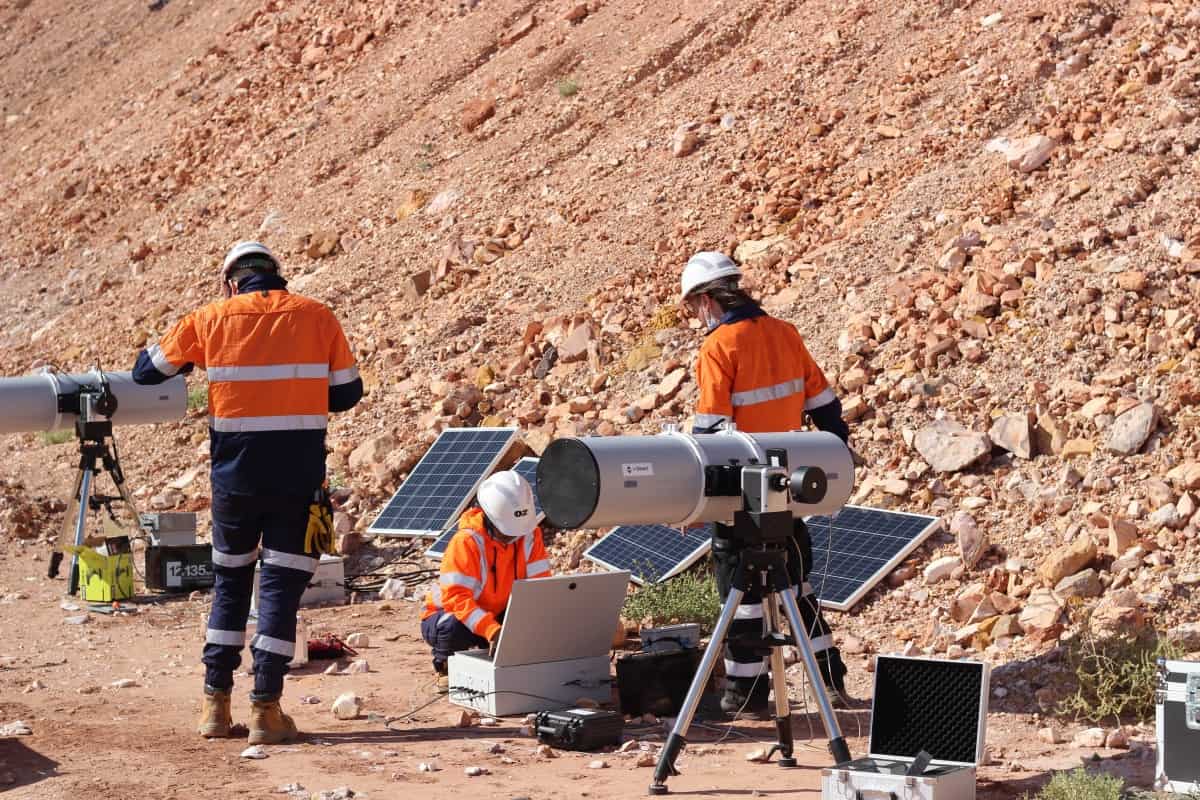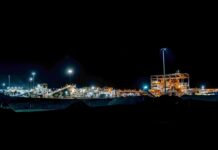Cosmic rays and hyperspectral imaging in mining operations

It sounds like something out of Star Wars, yet cosmic rays and hyperspectral imaging are a central feature in two mining technology projects backed by the Advanced Manufacturing Growth Centre (AMGC), with major implications for safety and access to strategically important materials.
mDetect is a Swinburne University spinout specialising in astrophysics research into muons, a type of subatomic particle that results from the Earth’s atmosphere being hit by cosmic rays, which fall harmlessly and constantly down on us1. They are sometimes described as the heavy cousin of electrons, with their mass helping them pass deep into objects; much further, for example, than ground penetrating radar.
The company has commercialised telescopic devices and software in a system that uses muon behaviour to monitor and map tailings dams, providing real-time information on stability of the critical infrastructure in mining operations.
Assisted by $248,191 in co-funding from AMGC’s Commercialisation Fund, mDetect has trialled its muography-based imaging system at Oz Minerals (now part of BHP), and leveraged key partner Swinburne to assist with development, documentation, design for manufacture, production automation and other input ahead of scale manufacture.
mDetect co-founder Dr Jerome Donovan says he is thankful of the AMGC.
“We’ve gone from idea to impact, developing our product for commercial sales, securing key agreements, and developing our design for scaling manufacturing – it has by far been our best government-funded program experience,” he said.
“With high-profile partnerships secured, mDetect is set to revolutionise global industries and enhance mining safety.
“Taking highly-technical IP – and which has heritage in dark matter research, no less – and delivering a market-ready product is never easy.
“But we are very nearly there thanks to the support from AMGC.”
The project is expected to lead to $7.7m in revenues in the fifth year after completion and has already resulted in new jobs at the growing company.
AMGC managing director Dr Jens Goennemann comments on this.
“An Australian manufacturer harnesses the power of space to protect lives on Earth. That’s Australian manufacturing at its best – globally relevant, collaborative, and highly complex,” he said.
“mDetect is truly a leader in their field, poised to make a global impact.”
From utilising space particles to leveraging electromagnetic imaging, EQ Resources, the owner of the formerly dormant Mount Carbine tungsten mine in North Queensland, has innovatively devised a method to identify and extract tungsten from waste sources, following its discovery at the site in the year 1895.
Today tungsten is recognised in the EU, US and elsewhere as a critical mineral2. It is used to toughen steels for the space, defence and renewable energy sectors and is found in many products such as lighting and heating elements. An estimated 85% of global supply is currently derived from China3.
AMGC supported EQ Resources (ASX: EQR) through $600,000 in co-investment to support a project to recover tungsten from a mine waste stockpile and low-grade deposits, incorporating high-tech hyperspectral imaging sensors on a front-end loader, AI-assisted decision-making and X-ray sorting technology.
The project linked EQR with Mt Carbine Quarrying Operations, Plotlogic, Tomra, Cronimet, and the University of Queensland.
It has created an extra 20 jobs, upskilled 30 employees, and helped deliver an additional $3.6m in revenues since completion of the project.
EQ Resources chief executive Kevin MacNeill says early co-investment form AMGC allowed the company to accelerate the commercial development of its technology.
“Furthermore it gave us the credibility to apply for follow-on programs and secure a $6m grant from the Critical Minerals Accelerator Initiative to move from pilot to operational scale,” he said.
“EQ Resources’ hyperspectral imaging technology demonstrates that there is still significant life in historical mines where waste piles are mountains of opportunity – in this case 130-year-old piles of tungsten containing waste.”
Dr Goennemann says tungsten is a crucial element in modern life and EQ Resources will be able to extract greater value from resources long-thought unusable both here in Australia and abroad.
References:
- https://www.energy.gov/science/doe-explainsmuons
- https://www.industry.gov.au/publications/australias-critical-minerals-list
- https://www.nasdaq.com/articles/top-10-tungsten-p-roducing-countries-updated-2024






















